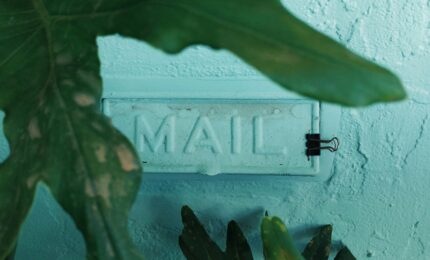Direct Mail Postcard Printing & Mailing Tips (All You Need to Know)
By Paul Bobnak | February 27, 2020

Editor’s Note: This post was originally published in February 2020 and has been updated for accuracy and comprehensiveness as of June 2023.
Postcards are one of the most effective ways to get your direct mail campaign message out to your target audience.
Why postcards, you ask? Many marketing campaigns are only using digital mediums these days. They are sending out email after email and pouring money into paid ads, but they are missing the opportunity to truly engage and get the attention of potential clients and customers.
Think about it. How many emails do we get in our inbox each and every day? Too many, right? In fact, we get so many emails that our natural inclination is to delete most of them. But, when we get actual pieces of mail from our mailbox—things we can physically hold in our hands—we usually take the time to look at each piece. If we see an attractive postcard with an intriguing offer, we are even more likely to read it rather than throwing it in the recycle bin.
9 Steps to the Perfect Postcard Campaign
You have many great options to get your message into your customers’ mailboxes, but none is as simple as the postcard.
You can design and produce them quickly. They don’t cost much to print or mail, so they’re perfect when you’re on a budget. You get just enough room to make your point quickly, and your call to action can be impossible to overlook.
With the right combination of postcard mailing services, your campaign can stand out from the competition and move your customers to act.
But how?
1. Set a goal first
Before you start designing, figure out what your campaign objective is. That will help you decide whether the postcard is your best tactic to help you achieve it.
Postcards are best suited for limited or single-focus uses. They serve a narrower purpose than any other format in direct mail marketing. They can make your campaign stand out and:
- Promote a special offer (maybe even 2 or 3 at most) or a sale
- Reward a customer for their loyalty with a coupon
- Recognize a customer’s birthday or other milestone with a coupon or discount
- Solidify the reputation of your brand – whatever your business or service – with helpful information (think realtors and insurance agents)
- Announce a grand opening, new service, or new hire
- Remind a patient or customer about an appointment, a renewal or a needed service
- Introduce a business or store to a new mover
- Drive traffic to an app or website
The postcard’s physical limits and its lower printing and postage costs make it perfect for most small and local businesses. Depending on your product or services, think about mailing different postcards to different segments of your audience, or even using variable data printing (VDP) to create customized versions.
To make your campaigns more relevant, create special messages, offers or creative elements to the different segments you’ll be mailing.
2. Determine the value of each new customer
You can do this by estimating the lifetime value of your customer. Ask yourself these questions:
- How much does a customer spend each time they use your business?
- How long would you expect a customer to continue being a customer?
3. Do your target market homework
Do your homework. Know everything you can about your customer base. The more information you have about them, the better.
4. Check your size
Let’s talk about all of that space you’re going to be using to sell your service or product.
What is a postcard, exactly? According to USPS, a mailpiece must be rectangular and meet these dimensions to qualify as a postcard:
- At least 3-1/2” high X 5” long X 0.007” thick
- No more than 6” high X 9” long X 0.016” thick
- Have finished corners that do not exceed a radius of 0.125”
By the way, the length is the measurement of the side that’s parallel to the address.
Remember – this is a narrow range of sizes that gets your mailer through USPS’s equipment more easily and mails at “postcard” rates.
But other, larger postcard sizes really stand out better in the customer’s mailbox and drive response.
A 5.5” X 8.5” postcard, or even better, the popular jumbo size (measuring 6” X 11”) has much more room for your message, offers, images, and call-to-action. They showcase all of these elements using white space, rather than jam too much onto a small card.
You can save money per piece, even at the letter or flats postage rate, by printing and mailing in larger quantities.
5. Create an attractive “call to action”
Your postcard printing and mailing needs to have a specific directive to entice potential customers to head your way. Keep it simple. For some ideas, check out these examples of great CTAs.
- “Get a beautiful new smile by calling us at [phone number]”
- “Scan this code for your personalized free quote”
- “Visit [advisor name] for a FREE 401(k) consultation”
6. Know your USPS rate
Talking about postage can be very complex, but we have you covered. We’ll provide you with all your options. This section is just to help you out with some background.
To mail at commercial rates, your campaign needs at least 500 pieces.
Let’s say that you have that amount or more. Depending on how your mail is printed and prepared, your bulk campaign might qualify for either machinable or automation rates.
“Machinable” means that you have an accurate address and have met the correct size and weight standards. The single presort price for a postcard is now 40.04 cents (again, July 9, 2023) each.
“Automation” means that you’ve done some of the work for USPS by helping to process the mail with a delivery point or Intelligent Mail barcode. Your postcard will have to meet certain design standards. The aspect ratio has to measure between 1.3 and 2.5. To figure it out, take the length of your postcard and divide it by the height.
Now, here’s the info you really want: how to save even more money:
USPS uses 3 levels of presort when pricing: 5-Digit, AADC, and Mixed AADC. With the 5-Digit tray preparation (mail with the same 5-digit zip code), the current per-piece rate is 35.5 cents.
7. Build your budget
At this point, you have the crucial cost information. Now, you have to add up how much money you can afford to spend on printing, processing, and postage.
Be sure to let your rep know what you want to spend. We’ll do the leg work, working with your numbers to provide you with options.
For help in getting the right number, revert back to step 2. Once you have the value of each new customer, figure out how many new customers you would like to have. Then determine how much the campaign will cost to generate the desired number of new customers.
For every postcard campaign, you’ll have to balance your budget against reach – your target audience or audiences (see above) – and your mailing frequency (see below). You have a wide range of options. As you monitor your response, consider adjusting your tactics..
8. Set your schedule
While a postcard campaign is economical and efficient to run, you still have to coordinate many moving parts. Again, depending on your overall goal, your target audience, and your budget, you should set up a timeline for deliverables like design, approvals, printing, and delivery to USPS.
Also, don’t expect that campaign to be a one-time thing.
Remember the marketing “Rule of 7”: A prospect needs to see or hear an advertiser’s message seven times before acting. Your postcard might not be noticed right away. Don’t worry! Frequent mailings – even those with different messages or offers – are more likely to appeal when mailed to the right audience.
9. Keep the postcards coming
You don’t want to stop with just one mailing. It typically takes 3-4 mailings to the same target audience to get the response you’re looking for.
Wrapping it up
Your audience, budget, and schedule all have certain advantages that have to be weighed against each other when planning your postcard printing and mailing.
Knowing what to do, even for a simple piece of mail, isn’t easy.
Call on the experts at mailing.com! We can help you choose the right postcard and tailor a campaign that meets your specific needs.


